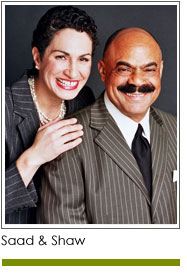 Why does one nonprofit receive $1,000 from a donor when another receives $1 million? What is the difference between fundraising and the process of securing transformational gifts? To get some answers we talked with Barbara Pierce, founder of Transformative Giving.
Why does one nonprofit receive $1,000 from a donor when another receives $1 million? What is the difference between fundraising and the process of securing transformational gifts? To get some answers we talked with Barbara Pierce, founder of Transformative Giving.
Pierce got right to the point: “Transformational gifts come out of a partnership with a donor, built on a common goal that neither the donor nor the organization can accomplish on their own. Fundraising is about getting gifts to meet a budget; transformative giving is about achieving a vision. Without fundraising and the financial foundation it provides, you cannot engage in transformative giving.”
She elaborated further, sharing what it means to be “donor focused.” “Usually, nonprofits are driven by their own budget on their own timeline, i.e. fiscal year, solicitation cycle, board meeting schedule,” she began. “To be donor focused is to focus on the donor’s timeline versus your own. Most transformative gifts take more than a year to transpire but too many organizations forfeit a larger, more meaningful gift for a smaller, immediate one to fit their own calendar.”
“When you are donor-centric, you don’t think in terms of ‘they should give us X; they are really rich,’ which is something I’ve heard many times. You also have an attitude of exploring common areas of interest versus believing you have to ‘educate’ donors on all aspects of your organization before they are qualified to play a meaningful role in your discussions.”
“Institutionally, it is an approach that says, ‘we want to understand who our donors are, what drives their decisions and what type of involvement is important to them,’ Pierce continued. “Any successful for-profit company takes a deep interest in understanding who their customers are and how they can be of service to them. I see this as a critical gap in nonprofits engaging with those donors most able to make a transformative gift.”
Vision, leadership, capacity, stewardship. These are at the core of successful nonprofit fundraising. They are magnified and held to a higher standard when talking with individuals who can give at the highest levels. How donors are perceived and treated can impact if and when they make a meaningful investment.
“I believe one of the biggest factors that impede groups from attracting such gifts is their lack of interest or ability to see donors as partners versus a source of funds, Pierce advised. “There are a lot of assumptions about ‘rich people’ among many nonprofit staff members, including the idea that a donor will have undue influence on the organization’s mission if they accept a large gift. People don’t make transformative gifts to organizations that aren’t already embracing a vision they both hold in common.”
Next week: Part Three - Start by asking “why?”
Visit Barbara Pierce at www.transformativegiving.com.
Copyright 2013 – Mel and Pearl Shaw
Mel and Pearl Shaw are the authors of “Prerequisites for Fundraising Success.” They position nonprofits for fundraising success. Visit them at www.saadandshaw.com.

















